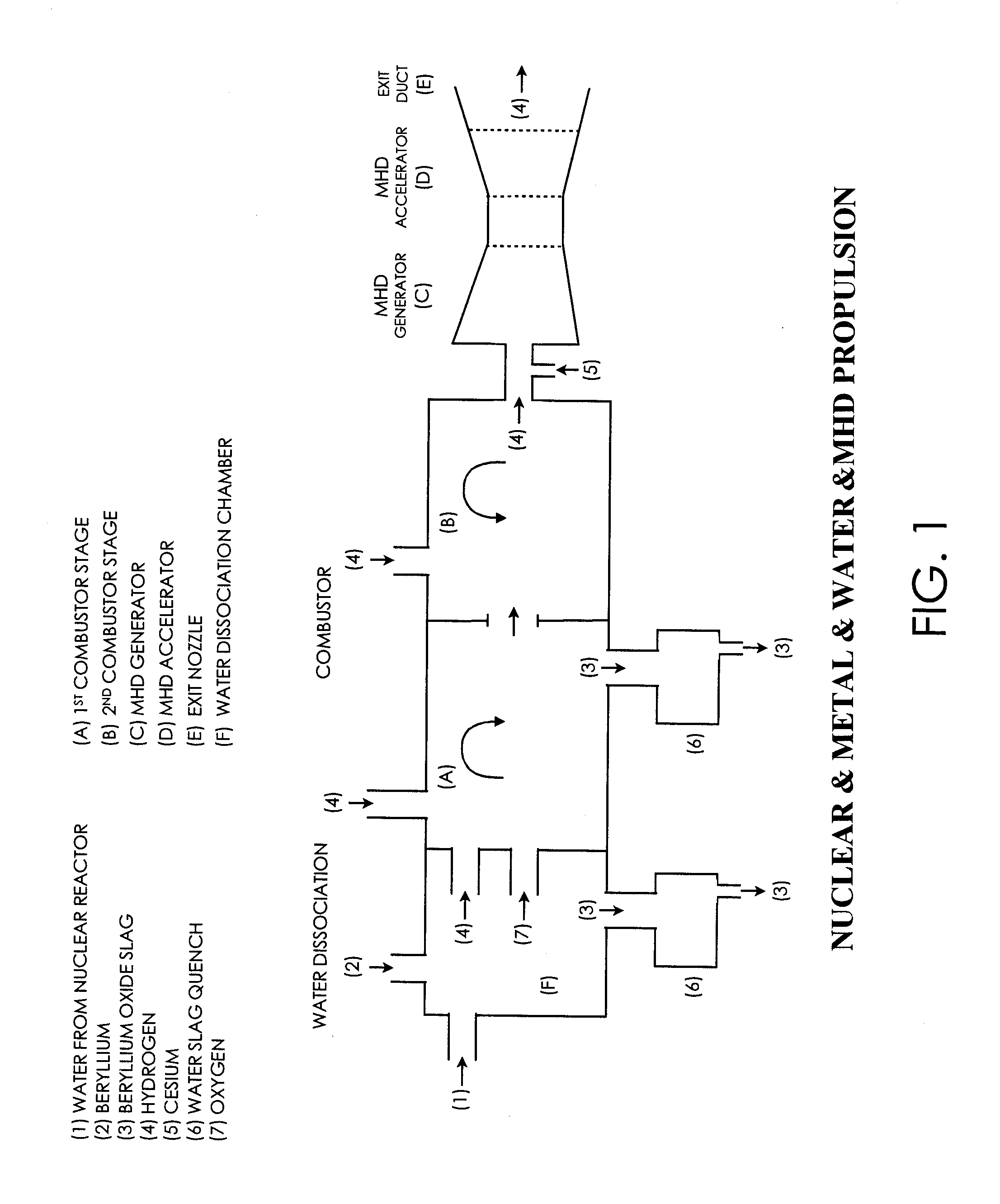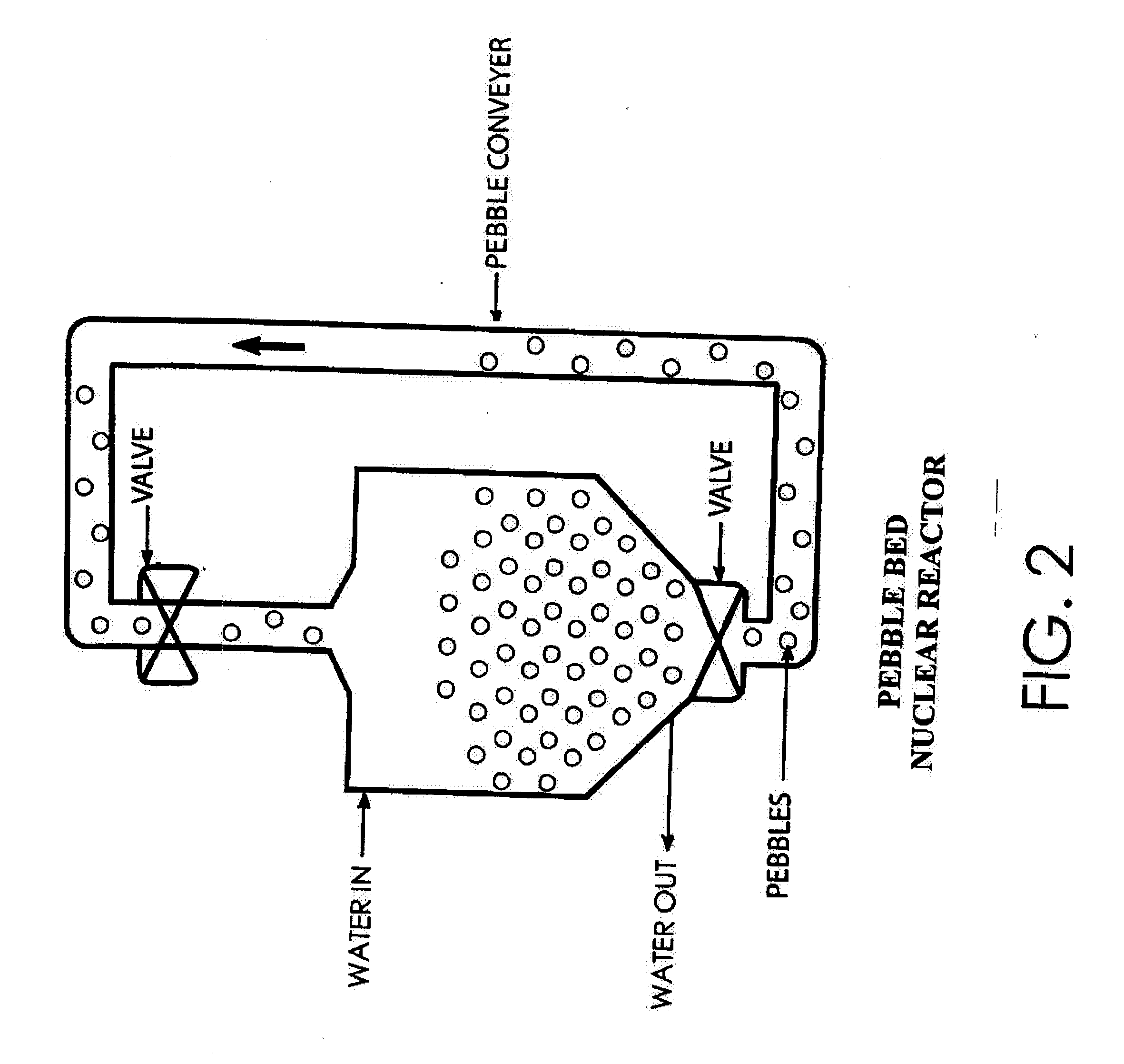Nuclear energy, metal fuel, h2 / o2 from h2o, with mhd power and propulsion for one month astronaut rocket voyages to mars
a technology of metal fuel and rocket, which is applied in the direction of nuclear reactors, nuclear elements, greenhouse gas reduction, etc., can solve the problems of unattainable reversibility in actual cycles and more intermediate steps with more energy losses, and achieve the effect of higher speeds
- Summary
- Abstract
- Description
- Claims
- Application Information
AI Technical Summary
Benefits of technology
Problems solved by technology
Method used
Image
Examples
case 1a , 3000
[0362]Case 1A, 3000° K, uses the same total structure weight of 743,735 lb. as the NERVA Case 1. However, the H2 weight of 1,181,000 lbs. is to be replaced with H2 computed from the MHD-generator-accelerator to achieve a 39 day trip each way with higher thrust.
case 2a
[0363 uses about one-half the Case 1 weight but only liquefied H2 and O2 plus Be metal powder.
case 3a
[0364 is the definitely preferred solution. Here the consumable volume is 6.89% of the volume in the NERVA rocket consumable volume. Therefore, it is assumed the rocket structures would be reduced by about the same percent to 29,383 lb. Since only one nuclear reactor will be used, its weight would be 19,000 lb. However, as explained in more detailed below on Case 3A, room was left for 3 more nuclear reactors, which increases their weight to 78,424 lb. Therefore, the total for the three structural items is 238,193 lb. As stated above, the consumables are 267,195 lb. This yields a total rocket weight of 505.388 lb. or 25% of the NERVA rocket. Due to the compact size of the MHD generator and accelerator, they are in the range of several cubic feet, and their weight is not included. Even the magnet, which one would expect to be heavy, can be greatly lightened by using high strength composite materials, as discussed earlier in the application. Also, some additional beryllium and water fo...
PUM
 Login to View More
Login to View More Abstract
Description
Claims
Application Information
 Login to View More
Login to View More - R&D
- Intellectual Property
- Life Sciences
- Materials
- Tech Scout
- Unparalleled Data Quality
- Higher Quality Content
- 60% Fewer Hallucinations
Browse by: Latest US Patents, China's latest patents, Technical Efficacy Thesaurus, Application Domain, Technology Topic, Popular Technical Reports.
© 2025 PatSnap. All rights reserved.Legal|Privacy policy|Modern Slavery Act Transparency Statement|Sitemap|About US| Contact US: help@patsnap.com



